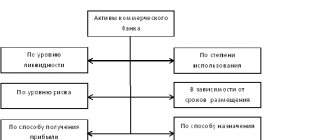Briefly about the history of the taxation system in Russia
The tax system of the Russian Federation began to take shape after the collapse of the USSR, namely in December 1991.
Then the law “On the Fundamentals of the Tax System of the Russian Federation” was adopted. He introduced new taxes and fees, for example, VAT, income tax, excise taxes on alcohol and tobacco products and others. In 1998, the 1st part of the Tax Code of the Russian Federation was approved, in 2000 - the 2nd part. This code has become the main legislative act in the Russian tax system. The Tax Code of the Russian Federation determined the relationship between the state and taxpayers, the structure and elements of the Russian tax system. Separately, it is worth highlighting the formation of state bodies to supervise taxation in the Russian Federation. In 1990, the State Tax Inspectorate was created, which was then transformed into the State Tax Service. In 1998, the Ministry of Taxes and Duties appeared. In 2004, it was reorganized, and its functions were transferred to the Ministry of Finance of the Russian Federation. From the same year, the well-known Federal Tax Service began to function, which continues to operate to this day.
Tax system structure
The state tax system is built on certain principles and has an orderly structure. Among the principles of taxation that formed the basis of the tax system of most developed countries of the world, the following stand out:
- fairness in taxation;
- the principle of certainty and accuracy of taxes;
- maintaining maximum convenience for taxpayers in matters of timing and methods of paying taxes;
- the principle of tax efficiency (the costs of collecting and servicing them should be much less than tax amounts).
The tax system of the Russian Federation consists of two large subsystems: the system of tax authorities and the tax system. A separate structural component is a set of laws regulating both taxation and the activities of tax authorities. The legislative framework includes federal laws and legislative acts of the constituent entities of the Federation, resolutions of municipal (local) authorities.
Figure 1. Tax system and its structure. Author24 - online exchange of student work
The tax system includes the following elements:
- a set of federal taxes and fees (value added tax, profit tax, state and customs duties, excise and license fees, environmental tax);
- a set of taxes and fees established by the constituent entities of the Federation and operating on their territory (taxes on the property of an enterprise or company, taxes on real estate, taxes on the gambling business);
- municipal or local taxes (land tax, advertising taxes, inheritance and gift taxes, local license fees);
- elements of taxation (all kinds of benefits and tax rates, accounting forms).
The tax system is... (concept and structure)
The tax system of the Russian Federation can be defined as the totality of all taxes and fees adopted in Russia, as well as administrators of taxes and fees (government bodies) and their payers.
The structure of the Russian tax system implies a complex interaction of all its constituent elements: taxes (and, since 2017, also insurance premiums) and fees, their payers, the legal framework and government bodies.
The structure of the tax system of the Russian Federation has 3 levels:
- federal;
- regional;
- local.
The tax level determines the corresponding budget level to which it is credited.
Since the tax system of the Russian Federation has a 3-level structure, the legislative framework on taxes and fees is also divided into 3 levels:
- Federal legislation is the highest level of the legislative framework. It operates throughout the Russian Federation. By-laws and other normative legal acts must not contradict it. This category includes both parts of the Tax Code of the Russian Federation, federal laws that are consistent with the provisions of the Tax Code of the Russian Federation, decrees of the President of the Russian Federation, resolutions of the Government of the Russian Federation and, of course, the Constitution of the Russian Federation.
- Regional legislation includes the laws of the constituent entities of the Russian Federation on taxation in a specific region of our country.
- Local legislation consists of normative legal acts that are adopted by representative bodies of local government (councils of deputies, legislative assemblies).
Research staff of Nizhny Novgorod State University named after. N.I. Lobachevsky conducted a study assessing the risks and effectiveness of various tax systems at different levels of the budget system. You can get acquainted with the conclusions of Doctor of Economic Sciences M. Yu. Malkina and her assistants in ConsultantPlus. If you do not have access to the K+ system, get a trial online access for free.
In addition, on the basis of the Tax Code of the Russian Federation, the Ministry of Finance of the Russian Federation and the Federal Tax Service of the Russian Federation develop orders, clarifications, clarifications, letters and other similar documents. They are necessary to specify the provisions and articles of the Tax Code of the Russian Federation and other federal laws of the Russian Federation in the field of taxation. Such documents clarify situations that are unclear from the point of view of taxpayers and can be drawn up on the basis of their requests.
Read more about federal, state and local taxes in this article.
Tax system of the Russian Federation briefly
The general characteristics of the tax system of the Russian Federation express it as the most important source of revenue for the state budget at all levels and the foundation for the high-quality and timely implementation by the state of its functions in managing cash flows and the economy.
The tax system of the Russian Federation is a complex of taxes, fees and other tax payments introduced by the federal legislation of the Russian Federation, as well as regulations of regions and local governments.
The concept of a tax system also includes the totality of relationships between taxpayers and the state.
Elements of the tax system of the Russian Federation
As noted earlier, the tax system of the Russian Federation involves the interaction of all its elements and an integrated approach to solving tax problems. All constituent elements form the tax structure of the Russian Federation.
The structure of the Russian tax system includes:
- all taxes, insurance premiums and fees accepted on the territory of our country in accordance with the Tax Code of the Russian Federation;
- subjects of taxes and fees;
- regulatory framework;
- government authorities in the field of taxation and finance.
Now let's look at each element of the Russian tax system in more detail.
Taxes and fees established in Russia are obligatory for those categories of taxpayers who are responsible for their payment in accordance with the provisions of the Tax Code of the Russian Federation. The concept of tax and fee is defined in the Tax Code of the Russian Federation.
The subjects of taxation are taxpayers (legal entities and individuals) and tax agents, that is, those who, according to the Tax Code of the Russian Federation, pay taxes and fees. As an example of tax agents, we can cite enterprises and organizations that calculate and transfer personal income tax on the accrued income of their personnel, and also submit the corresponding tax reports (6-NDFL) after the end of the tax period (year).
The system of tax authorities of the Russian Federation includes:
- Ministry of Finance of the Russian Federation.
- Federal Tax Service of the Russian Federation.
The Ministry of Finance of the Russian Federation determines the main directions of the tax policy of our state, forecasts tax revenues and makes proposals for improving the tax system of the Russian Federation as a whole. His department includes the Federal Tax Service of the Russian Federation as an executive body of state power.
The main functions of the Federal Tax Service of the Russian Federation are:
- accounting of taxpayers and fees;
- control over compliance with tax legislation requirements;
- supervision and verification of tax accruals, their payment to the relevant budget and tax reporting.
Read about tax audits in our section of the same name “Tax Audits”.
The Federal Tax Service of the Russian Federation is a unified system of all tax authorities. The unified centralized system of tax authorities consists of:
- Management in each subject of the Russian Federation. The territorial tax authorities and inspectorates of the Federal Tax Service of the Russian Federation are subordinate to him.
- Interregional inspections of the Federal Tax Service for each federal district. Subordinate to them are interregional inspectorates for the largest taxpayers, for centralized data processing (DPC), as well as interdistrict inspections.
Tax system concepts
One of the most important elements of government is the tax system.
It is an extremely necessary condition for the formation of the state budget and for the maintenance of government bodies. Therefore, the tax system began its formation simultaneously with the acceleration of the institution of statehood. As we know from history courses, an increase in labor productivity led to the emergence of surplus products. They have become the main means of payment in relations between members of society. A further increase in labor productivity led to the emergence of class stratification in society and the formation of a system of state power.
Definition 1
The state is a system for managing the political, economic and social activities of the population living in a certain territory (country).
Are you an expert in this subject area? We invite you to become the author of the Directory Working Conditions
Definition 2
A state is a system of a political country.
The state is governed through special bodies - the state apparatus. Funds are required to maintain it and ensure the activities of the state itself. Currently they are called taxes.
Definition 3
Taxes are mandatory gratuitous payments by individuals and legal entities that are made in favor of the state to finance the exercise of its powers and the tasks of its entities.
The state carries out tasks to provide various public goods (state defense capability, maintaining law and order within the country, maintaining non-working members of society and supporting the poor). This is done through funds collected in the form of taxes and other revenues. These funds accumulate in the budget. And from the budget they are spent in accordance with the policy pursued by the state.
Finished works on a similar topic
Coursework The structure and features of the tax system 410 ₽ Essay The structure and features of the tax system 220 ₽ Test work The structure and features of the tax system 210 ₽
Receive completed work or specialist advice on your educational project Find out the cost
The number of taxes and the procedure for their establishment and withholding are determined by the legislation in force in the country. The same legislation determines the range of government bodies in charge of taxation issues and the extent of their powers. This also applies to the duties of officials of these bodies. This is how the state tax system is formed.
Definition 4
The tax system is the entire set of taxes established in the state, the principles, forms and methods of their introduction or abolition, as well as the system of measures and bodies that ensure compliance with the requirements of tax laws (tax legislation).
The tax system performs the following essential functions:
- the principle of unity (unity of laws and regulations in the field of taxation throughout the state);
- ensuring regular revenues to the revenue side of budgets at various levels (fiscal function);
- redirection of tax flows in accordance with government policy (distribution function);
- ensuring state regulation of the economy through a flexible tax policy (regulatory function);
- control over the timeliness and completeness of tax payment (control function).
What are the taxes in the Russian Federation?
In total, there are 14 taxes in our country: 8 federal, including state duty, 3 regional and 3 local. There are 5 special taxation systems that stand a little apart. We will also highlight insurance premiums and the new experimental taxation regime for self-employed persons, introduced in 2022.
Read more about the experiment on taxation of the self-employed here.
Federal taxes throughout the territory of our state have the same tax rates, calculation rules and transfers in accordance with the Tax Code of the Russian Federation. These include:
- personal income tax;
- corporate income tax;
- VAT;
- excise taxes;
- water tax;
- mineral extraction tax;
- state duty.
Special tax systems also fall into this category: simplified tax system, production division, unified agricultural tax and PSN (patent).
Regional taxes are also approved by the Tax Code of the Russian Federation at the federal level. Regional authorities have the opportunity to change taxation conditions at their discretion and within the limits adopted by the Tax Code. For example, regions can set a tax rate, but not more than the amount prescribed in the Tax Code of the Russian Federation. All changes are fixed by the laws of the constituent entities of the Russian Federation. This includes transport tax, gambling tax, and corporate property tax. Regional government bodies can also introduce special tax regimes and make their own changes to them, but in accordance with the provisions of the Tax Code of the Russian Federation.
Local taxes, however, like other taxes and fees in Russia, are also approved by the Tax Code of the Russian Federation. Local self-government bodies can make changes and additions to them within the framework of the Code. Local taxes include:
- land tax;
- property tax for individuals;
- trade fee.
Depending on the manner of collection, taxes can be divided into 2 main categories: direct and indirect. Direct taxes are charged directly on the income or value of the taxpayer's property. Indirect taxes are included in the cost of goods, services and works. In fact, they are paid by the buyer of the product, and the seller acts as an intermediary between the indirect tax and the state. In the Russian Federation there are only 2 indirect taxes: VAT and excise taxes. All others are direct.
For more information about direct and indirect taxes, read the article “What taxes are classified as direct and indirect (table)?”
Main characteristics of the tax system
The tax system is characterized, firstly, by economic indicators and, secondly, by factors of a political and legal nature.
To economic characteristics
tax systems
include
:
· tax oppression;
· ratio of direct and indirect taxes;
· the ratio between taxes from domestic and foreign trade.
In addition, tax systems are revealed through certain types of taxation.
1. Tax oppression
. Economic development is largely determined by the achieved level of tax revenues and the maximum tax burden that is possible under the current economic policy of the state and tax legislation.
In Russia there is no generally accepted method for calculating tax burden. There are only individual meters that give an idea of the severity of the taxation.
The most general indicator characterizing the role of taxes in the life of society and the state is tax oppression (tax burden).
Tax oppression
(
tax burden
) - the ratio of the total amount of tax collections to the total national product, which shows what part of the product produced by society is redistributed through budgetary mechanisms.
At the state level, the amount of taxes is usually compared to gross domestic product (GDP).
Example. According to the Ministry of Finance, the volume of taxes in relation to GDP was: in 1999 - 31.5%; in 2000 – 33.5%; in 2001 – 33.9%; in 2002 – 32.9%, in 2003 – 31.0%, in 2004 – 29.4%, in 2005 – 24.7%.
full tax rate is also used
, which shows what part of the added value obtained in the process of production and sale of goods and services is withdrawn to the state budget.
Tax burden of a business entity
is a relative value characterizing the share of taxes in the selected performance indicator (income, value added, profit, etc.).
2.The ratio of direct and indirect taxes.
According to the mechanism of collection and control, indirect taxes are simpler than direct taxes. They do not require a developed tax apparatus and a complex settlement system. Therefore, as a rule, in less developed countries the share of indirect taxes is higher.
The low share of direct taxes is due to an insignificant important component compared to other countries - the personal income tax. In countries with developed market economies, this tax makes up 20–50% of total tax revenues, and in Russia – 10–13%: in 2000 – 10.2%; in 2001 – 10.9%, in 2002 – 11.4%; in 2003 – 12.2%; in 2004 – 11.6%. It is typical that in our country the basic income tax rate is 13%, in Japan it varies from 10 to 50%, in the USA - from 15 to 39.6%.
3.The relationship between taxes from domestic and foreign trade
depends on the level of industrial development, the degree of openness of the economy to international trade and the commodity structure of exports.
The value of this indicator in OECD countries is 12:1, in Russia – approximately 2:1.
The characteristics of tax systems are also associated with the predominance of certain types of taxation in them. The tax system of our country is characterized by both proportional taxation (corporate income tax, personal income tax) and progressive taxation (personal property tax).
In addition to the level of economic development and property relations, factors of a political and legal nature are of decisive importance for the construction of the state’s tax system.
The most important ones include the following:
· the prevailing proportions in the country in the distribution of economic functions, social roles between the central state administration and local authorities;
· the role of taxes among sources of revenue for budgets at various levels;
· degree of control of the central administration over local authorities.
Technical solutions for the implementation of these factors cover three forms of relationships between budgets of various levels, conventionally referred to as:
· Miscellaneous taxes
– this form implies complete and incomplete separation of the rights and responsibilities of various levels of government in establishing taxes.
· Different rates
– the essence of this form is that the basic conditions for the collection of a particular tax are established by the central authority, and local authorities determine the tax rates at which the tax credited to a specific local budget is calculated, while the total tax rate may also be limited central authority.
· Miscellaneous income
– with this form, the freedom of local authorities is quite insignificant, because in this case the amounts of collected taxes are divided between the budgets of various levels. The procedure and conditions for division are established by the central government either according to the needs of specific regions, or according to some established standards (population, volume of tax revenues, etc.).
Usually in practice, combinations of all three, less often two, forms are used.
The tax system is characterized, firstly, by economic indicators and, secondly, by factors of a political and legal nature.
To economic characteristics
tax systems
include
:
· tax oppression;
· ratio of direct and indirect taxes;
· the ratio between taxes from domestic and foreign trade.
In addition, tax systems are revealed through certain types of taxation.
1. Tax oppression
. Economic development is largely determined by the achieved level of tax revenues and the maximum tax burden that is possible under the current economic policy of the state and tax legislation.
In Russia there is no generally accepted method for calculating tax burden. There are only individual meters that give an idea of the severity of the taxation.
The most general indicator characterizing the role of taxes in the life of society and the state is tax oppression (tax burden).
Tax oppression
(
tax burden
) - the ratio of the total amount of tax collections to the total national product, which shows what part of the product produced by society is redistributed through budgetary mechanisms.
At the state level, the amount of taxes is usually compared to gross domestic product (GDP).
Example. According to the Ministry of Finance, the volume of taxes in relation to GDP was: in 1999 - 31.5%; in 2000 – 33.5%; in 2001 – 33.9%; in 2002 – 32.9%, in 2003 – 31.0%, in 2004 – 29.4%, in 2005 – 24.7%.
full tax rate is also used
, which shows what part of the added value obtained in the process of production and sale of goods and services is withdrawn to the state budget.
Tax burden of a business entity
is a relative value characterizing the share of taxes in the selected performance indicator (income, value added, profit, etc.).
2.The ratio of direct and indirect taxes.
According to the mechanism of collection and control, indirect taxes are simpler than direct taxes. They do not require a developed tax apparatus and a complex settlement system. Therefore, as a rule, in less developed countries the share of indirect taxes is higher.
The low share of direct taxes is due to an insignificant important component compared to other countries - the personal income tax. In countries with developed market economies, this tax makes up 20–50% of total tax revenues, and in Russia – 10–13%: in 2000 – 10.2%; in 2001 – 10.9%, in 2002 – 11.4%; in 2003 – 12.2%; in 2004 – 11.6%. It is typical that in our country the basic income tax rate is 13%, in Japan it varies from 10 to 50%, in the USA - from 15 to 39.6%.
3.The relationship between taxes from domestic and foreign trade
depends on the level of industrial development, the degree of openness of the economy to international trade and the commodity structure of exports.
The value of this indicator in OECD countries is 12:1, in Russia – approximately 2:1.
The characteristics of tax systems are also associated with the predominance of certain types of taxation in them. The tax system of our country is characterized by both proportional taxation (corporate income tax, personal income tax) and progressive taxation (personal property tax).
In addition to the level of economic development and property relations, factors of a political and legal nature are of decisive importance for the construction of the state’s tax system.
The most important ones include the following:
· the prevailing proportions in the country in the distribution of economic functions, social roles between the central state administration and local authorities;
· the role of taxes among sources of revenue for budgets at various levels;
· degree of control of the central administration over local authorities.
Technical solutions for the implementation of these factors cover three forms of relationships between budgets of various levels, conventionally referred to as:
· Miscellaneous taxes
– this form implies complete and incomplete separation of the rights and responsibilities of various levels of government in establishing taxes.
· Different rates
– the essence of this form is that the basic conditions for the collection of a particular tax are established by the central authority, and local authorities determine the tax rates at which the tax credited to a specific local budget is calculated, while the total tax rate may also be limited central authority.
· Miscellaneous income
– with this form, the freedom of local authorities is quite insignificant, because in this case the amounts of collected taxes are divided between the budgets of various levels. The procedure and conditions for division are established by the central government either according to the needs of specific regions, or according to some established standards (population, volume of tax revenues, etc.).
Usually in practice, combinations of all three, less often two, forms are used.
Types of taxation systems in the Russian Federation: basic, simplified taxation system, etc.
Choosing a taxation system in Russia for business entities is an important event that allows you to determine the tax burden for business. Let's look at the main types of taxation in Russia.
The tax system of the Russian Federation includes 5 tax regimes plus another experimental one (from 2022):
- Basic taxation system (OSNO).
This mode is assigned to a business entity automatically immediately after registration with the Federal Tax Service. It can be used by both LLCs and individual entrepreneurs. The taxpayer has the right to switch to a special regime subject to compliance with the conditions established by tax legislation.
- Simplified taxation system (USNO).
The simplified tax system has the right to be used by taxpayers who:
- the average number of employees does not exceed 100 people;
- the residual value of depreciable fixed assets does not exceed 150 million rubles;
- income for 9 months do not exceed the amount of 112.5 million rubles, adjusted by the deflator coefficient (according to the latest clarifications of the Ministry of Finance in 2022, for the transition to the simplified tax system from 2022, taking into account indexation, it is equal to 123.3 million rubles).
- Unified Agricultural Tax (USAT).
Only agricultural producers have the right to use this regime.
Read about the details of using the Unified Agricultural Tax in the section “Unified Agricultural Tax”.
- Patent (PSN).
PSN has the right to be used exclusively by individual entrepreneurs. The meaning of this regime is that a merchant buys a patent for a certain period not exceeding 12 months.
See here for details.
How to choose the best tax system
- BASIC.
This regime has the highest tax burden:
| Tax | OOO | IP |
| Income tax | 20% | – |
| Personal income tax | – | 13% |
| VAT | 10 or 20% of the markup amount depending on the type of goods | |
| Excise taxes | The rate depends on the type of product | |
| Property tax | The rate is set by regional authorities | |
| MET | The rate depends on the type of minerals | |
| Transport tax | The rate is set by regional authorities and depends on the power of the vehicle | |
| Water tax | The rate depends on the type of water body | |
If your business is just starting to develop, we recommend paying attention to special modes. Let's consider the main one - the simplified tax system.
- USNO
The taxpayer must first decide on the type of taxable object. With the simplified tax system there are 2 of them:
- Income from which 6% is paid to the budget.
- The difference between income and expenses, from which 15% should be transferred to the state.
| pros | Minuses | ||
| Income (6%) | Income minus expenses (15%) | Income (6%) | Income minus expenses (15%) |
| The single tax replaces the income tax (personal income tax for individual entrepreneurs), VAT, property tax (with the exception of the tax calculated from the cadastral value of real estate) | A closed list of expenses that can be used to reduce income received for the year | ||
| One year-end declaration is submitted to the Federal Tax Service | In case of loss, a minimum tax of 1% of income is paid | ||
| Accounting is carried out in a simplified version | |||
| The tax amount can be reduced by the amount of the transferred insurance premiums | Opening branches is not available | ||
To decide which type of simplified tax system to choose, you need to study the amount of documented expenses. If it is at least 60% of the amount of income, then a simplified tax system of 15% is more profitable; if less, then it is better to choose a simplified tax system of 6%.
For the nuances of using the simplified tax system, see the “STS” section.
Practical recommendations on choosing the optimal taxation system for organizations and individual entrepreneurs are provided by ConsultantPlus experts. Get free access and go to Ready-made solutions using the links provided.
Results
The Russian tax system involves a complex interaction of all elements that form its structure. The elements of the tax system of the Russian Federation include: taxes and fees, their payers, the regulatory framework and government authorities in the tax field. The structure of the Russian Federation system in the field of taxation has 3 levels: federal, regional and local. At each of these levels, relevant legislative acts are adopted, which should not contradict the provisions of the Tax Code and the Constitution of the Russian Federation.
You can find more complete information on the topic in ConsultantPlus. Free trial access to the system for 2 days.




